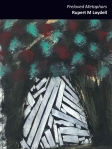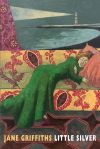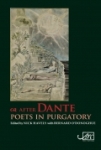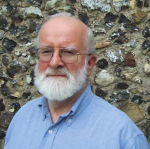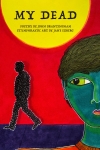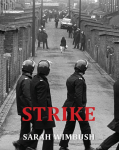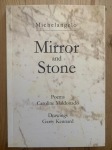
Michelangelo is renowned as an artist, sculptor, architect and poet, a true Renaissance man. In their short book Mirror and Stone poet and translator Caroline Maldonado and artist Garry Kennard have collaborated through verse and image to explore some aspects of this multi-faceted and complex man.
To begin with the poetry: Caroline Maldonado, poet and translator, has taken fragments of Michelangelo’s own poetry that particularly seemed to represent his ideas and feelings about himself and presented them in the honed down syllabic cinquain form. Other words are inserted into longer poems. All his words and lines are in italics. There are also versions of two of Michelangelo’s own sonnets and a compressed version of a sonnet by the Marquess Vittoria Colonna, a famous poet of the time and the artist’s spiritual guide. The rest of the poetry, multi-faceted as the subject himself, is the author’s own with her responses and interpretations of Michelangelo’s intricate and tortuous inner self which, like his sculptures, is ‘chiselled in pain’, as well as poems expressing his aspirations and his platonic love for Colonna. In some verses there are also references to our own times (including in the three poems quoted below.)
Garry Kennard titles his introduction to the drawings in Mirror and Stone as ‘Echoes’. He sees Michelangelo as ‘one of the most introspective artists’ he has ever come across, a man who has dug deep into himself and into marble to find the source of his anguish and joy. The ten drawings in the book are exquisite in their shading and blurring of shadow and light and there is often an impression of two figures, shown or implied, ghostly figures that seem to represent the physical and spiritual, man and woman, agony and vision.
Poems and artwork in Mirror and Stone focus largely on Michelangelo as sculptor. Here is the idea of the subtractive process of marble work in which perfection lies within the stone and it is for the artist to reveal it. ‘He chooses stone to subtract from’, says the narrator in ‘Other dimensions’ and, in the translation of Michelangelo’s own words, ‘It’s by/taking away/that one draw from the stone/a live figure. It grows greater/in stone’.
But sculpting for him was so much more than the chiselling out of this live figure. For Michelangelo it was a process of transcendence, the rejection and leaving behind of human flesh and the revelation of the spirit, a personal redemption seen as a divine gift of grace. The anguish and conflict involved in this struggle for transcendence, this seeking out of heaven itself, is conveyed clearly in ‘Stone 1’ where ‘the pigments he grinds’ will ‘create a paradise/and hell with it’. The terror of hell was very real during these times. Michelangelo wrote erotic poems to a man and the practice of ‘sodomy’ meant excommunication and eternal hell as well as being punishable by execution. Michelangelo was a youth when the speeches of the charismatic fundamentalist preacher Savonarola drew crowds in their thousands, all willing to burn out sin by throwing items of pleasure and luxury and ‘all other trappings’ into huge bonfires until they were ‘burnt crisp as crackling’. (‘Michelangelo’s seven layers of skin’). This poem also serves as a reminder of the Sistine Chapel fresco of ‘The Last Judgement’ which, among other horrors, shows St Bartholomew being martyred until he was ‘one flayed skin’. On this skin Michelangelo painted a portrait of his own suffering face.
Images in the poem ‘Man or Beast’ are even more monstrous and appalling. Here ‘Bodies couple in pain trapped inside their pleasure’ while Man crouches ‘like a dog astride a city drain’. Here the Pope ‘in his purple robes’ is juxtaposed with a ‘baboon on a swing’ for both are ‘mere flesh and orifices both potential carcasses’. Notes on the poems in Mirror and Stone tell us that these images are taken from Francis Bacon who referenced Michaelangelo’s work in his own and shared his conflicts about the flesh.
The attainment of heaven was possible, perhaps, with the grace of Christ, after a lifetime of torment and fear. Poems and drawings in Mirror and Stone show Man weighed down and overwhelmed by this burden. Yet there is tenderness as well, and pity. Vittoria Colonna is represented as woman and spiritual guide with the qualities of a Madonna. ‘He writes to her at dusk’ and ‘one to one to one to one’ are poems of grief.
As is ‘Touch’, the poem I’ll end with. This includes Michelangelo’s own words following Colonna’s death as recorded by his contemporary student and biographer Ascanio Condivi. Skilfully deepening the associations, these words are intercut with Maldonado’s lines referring to this century’s pandemic where relatives could only touch through glass:
what grieved him above else
in those days of darkness
was when he went to la Marchessa
I visited her alone
and she was passing from this life
glass between us
he did not kiss her brow or her face
palm to palm on glass
simply her hand
unable to touch
Copies of Mirror and Stone– £10 plus £2.50 postage – can be obtained from caroline.maldonado@ntlworld.com or garry.kennard@btopenworld.com
Mandy Pannett 6th May 2024

